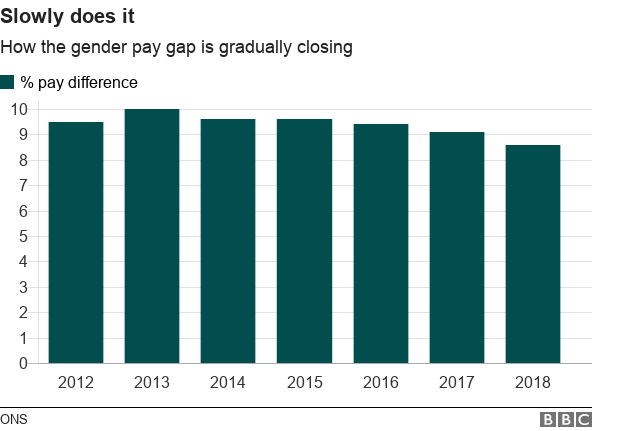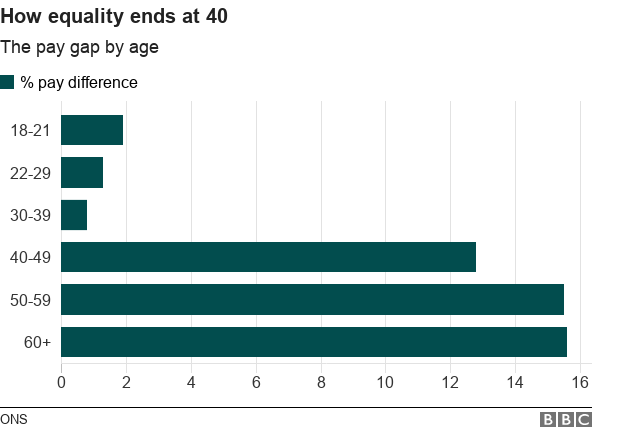Gender pay gap at lowest level yet, says ONS
- Published

The gender pay gap has fallen to its lowest level yet, the Office for National Statistics (ONS) has reported.
In the year to April 2018, the gap for full-time workers was 8.6% - down from 9.1% in the previous year.
In other words, the average female employee now earns 8.6% less than the average man.
However, campaigners said the rate of improvement was too slow and was a missed opportunity for the economy.
The extent of the pay gap varies according to age, with older female workers much more likely to be underpaid in comparison.

The ONS said the pay gap for those under the age of 39 was now insignificant and was narrowing "markedly" for those between the ages of 40 and 49.
However, pressure groups said the change was happening far too gradually.
"This is a practically static picture on pay inequality," said Sam Smethers, the chief executive of the Fawcett Society, which campaigns on gender rights.
"This slow rate of progress means without significant action, women starting work today and in decades to come will spend their entire working lives earning less than men."
The TUC said that the current rate of progress meant that it would take another 55 years for men and women to achieve pay parity.
In the 22-29 age group, women earn just 1.3% less than men.
However, in the 50-59 year-old group, women earn as much as 15.5% less than men.

"Millennials appear to be leading the charge, with younger men and women edging towards pay parity," said Laura Suter, personal finance specialist at AJ Bell.
"We now need to see this cohort of women encouraged to progress through to senior management roles. Focus should also turn to addressing the larger pay gaps that persist for older employees."
Pay
The ONS figures also show that the average full-time employee in the UK enjoyed a 3.5% pay increase in the year to April, the biggest rise since 2008.
Median gross weekly earnings reached £569, up from £550 in 2017.
However, when inflation is taken into account, the rise was only 1.2% on the previous year.
Those in "continuous" employment did better than the average, as did those in lower-paid occupations.
"Average weekly pay for full-time employees is now increasing at its fastest since the financial crisis, in cash terms, with hourly pay rising fastest among lower-paid occupations," said the ONS's Roger Smith.
"However, after taking account of inflation, earnings are still only where they were in 2011 and have not yet returned to pre-downturn levels."
- Published25 October 2018

- Published7 April 2018

- Published16 October 2018
